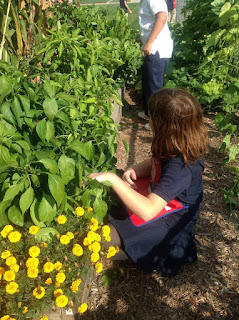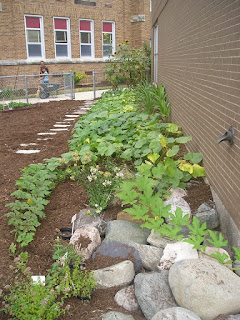Here’s a review I found of the book The Seed Underground: A Growing Revolution to Save Food by Janisse Ray. A timely topic, since many of us, right now, are gathering seeds and starting plants indoors, looking forward to spring.
If you don’t have time to read yet another book, don’t fret! Do one small thing to help keep heirlooms alive: make it a goal this spring to plant at least one heirloom variety in your garden, windowbox, or flower patch. I have found several seeds that I want to try HERE, and am very excited to get planting. -Andi
Heirlooms To the Rescue
 We often think of saving seeds in literal terms: letting flowers and vegetables go to seed, whether edible at that point (squash, tomatoes) or not (lettuce); separating and cleaning the seeds, drying them, and then protecting them until we’re able to plant again. But there’s a larger issue here, one that’s apparent when you consider that 94% of the seed varieties available to farmers and gardeners in 1900 have been lost, never to be grown again. Today, many of us are involved in saving seeds from extinction. To quote an old ecological saying: extinction is forever.
We often think of saving seeds in literal terms: letting flowers and vegetables go to seed, whether edible at that point (squash, tomatoes) or not (lettuce); separating and cleaning the seeds, drying them, and then protecting them until we’re able to plant again. But there’s a larger issue here, one that’s apparent when you consider that 94% of the seed varieties available to farmers and gardeners in 1900 have been lost, never to be grown again. Today, many of us are involved in saving seeds from extinction. To quote an old ecological saying: extinction is forever.
Today’s activists — there’s no better word for them – have taken those extinctions to heart and are on a quest to save as many varieties of seeds as they can. Janisse Ray, author of The Seed Underground: A Growing Revolution to Save Food is one of them. Ray’s book is a sort of manifesto on the practice and importance of seed saving. While she mixes in chapters that discuss the assault on non-corporate, non-patent protected heirloom seed varieties and the dangers of industrial agriculture, most of the book is a collection of intriguing stories about those involved in the seed saving movement. There’s the story of Iowa photographer Dave Cavagnaro who teaches willing gardeners about preserving and raising heirloom squashes; legendary seed saver Will Bonsall of Maine who explains his pollination and seed-saving techniques in terms that everybody can understand — sex. Then there’s the late seed saver and poet Jeff Bickert of Vermont who gave away heirloom seeds and starts for 11 different kinds of beans and 18 varieties of potatoes. All of these people, including the Tomato Man, who offers 312 varieties of heirlooms and open-pollinated tomatoes, and the Sweet Potato Queen, who grows 40 varieties of heirloom sweet potatoes, including some which are purple, are the kinds of characters you won’t easily forget.
People aren’t the only subjects here. Ray digs up the history of the Conch Cowpea, a spreading vine that was drought resistant and adaptable to the kind of sandy soils known in the coastal south. It served as a source of protein in places where northern beans wouldn’t grow as well as providing ground cover and a silage crop for livestock. Then there’s Keener Corn, grown for dry grinding into meal. Keener corn grows a stalk that can be very tall, 10 to 12 feet, but produces only a single ear per stalk. Why bother? It makes the tastiest meal that Ray, or its grower Bill Keener, have ever tasted. Need another reason? It’s been in the Keener family for generations. Letting it go would be like putting great-grandma’s Bible in the trash.
And that’s where author Ray excels. Sure, she talks about how some heirlooms are valuable because they are disease resistant or easily adaptable to certain local conditions. And then there’s flavor. In a world where commercially-grown produce tends to all taste alike, Ray finds the kind of varied flavors that chefs, both home and professional, cherish. But above it all, Ray brings a sense of family and community to the heirloom culture. Growing food — growing unique food — makes for a social camaraderie and a sense of purpose that other social endeavors have a hard time matching. Ray is also expert at personalizing the stories, bringing in her own experiences, sometimes unashamedly so, in a way that will connect with readers. You might not feel like you’re reading a gardening book while going through The Seed Underground, It’s more like a collection of short stories with a central theme. It’s that entertaining. Let’s also say its critical reading for those who want to know where their food comes from and have decided to grow their own. I can’t think of a better way to spend a few of these cold winter nights ahead of spring than reading Ray’s book.


















